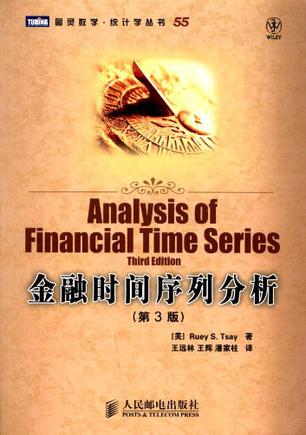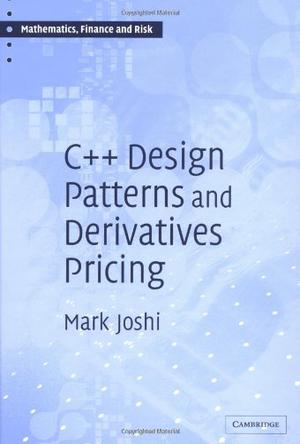-

金融时间序列分析
本书是金融时间序列分析领域不可多得的上乘之作,第1版面世后即成为该领域最具影响力的作品。作者在全面阐述金融时间序列分析理论知识的同时,还系统地介绍了金融计量经济模型及其在金融时间序列数据的建模和预测中的应用。第3版使用能够免费得到的R软件包,可以对金融数据进行实证分析,也可以使用现实的例子对相关计算和分析进行说明。本书还对金融计量经济学的最新进展进行了深入分析,例如实现波动率、条件风险值、统计套利及持续期和动态相关模型的应用。 第3版新增加的内容还包括以下几方面。 在高频数据分析和市场微观结构的所有讨论中,都使用了非线性持续期模型。 新增加了一些非线性模型和方法的应用。 更新了多元时间序列分析,分析了协整应用到配对交易分析的实用性。 使用损失函数这个新的统一的方法分析风险值。 在相依数据的极值、分位数和风险值的研究中,引入了极值指数。 -

Elementary Stochastic Calculus With Finance in View (Advanced Series on Statistical Science & Applied Probability, Vol 6)
Modelling with the Ito integral or stochastic differential equations has become increasingly important in various applied fields, including physics, biology, chemistry and finance. However, stochastic calculus is based on a deep mathematical theory. This text should be suitable for the reader without a deep mathematical background. It seeks to provide an elementary introduction to that area of probability theory, without burdening the reader with a great deal of measure theory. Applications are taken from stochastic finance. In particular, the Black-Scholes option pricing formula is derived. -

Financial Calculus
The rewards and dangers of speculating in the modern financial markets have come to the fore in recent times with the collapse of banks and bankruptcies of public corporations as a direct result of ill-judged investment. At the same time, individuals are paid huge sums to use their mathematical skills to make well-judged investment decisions. Here now is the first rigorous and accessible account of the mathematics behind the pricing, construction and hedging of derivative securities. Key concepts such as martingales, change of measure, and the Heath-Jarrow-Morton model are described with mathematical precision in a style tailored for market practitioners. Starting from discrete-time hedging on binary trees, continuous-time stock models (including Black-Scholes) are developed. Practicalities are stressed, including examples from stock, currency and interest rate markets, all accompanied by graphical illustrations with realistic data. A full glossary of probabilistic and financial terms is provided. This unique, modern and up-to-date book will be an essential purchase for market practitioners, quantitative analysts, and derivatives traders, whether existing or trainees, in investment banks in the major financial centres throughout the world. -

C++ Design Patterns and Derivatives Pricing
-

Arbitrage Theory in Continuous Time
The third edition of this popular introduction to the classical underpinnings of the mathematics behind finance continues to combine sound mathematical principles with economic applications. Concentrating on the probabilistic theory of continuous arbitrage pricing of financial derivatives, including stochastic optimal control theory and Merton's fund separation theory, the book is designed for graduate students and combines necessary mathematical background with a solid economic focus. It includes a solved example for every new technique presented, contains numerous exercises, and suggests further reading in each chapter. In this substantially extended new edition Bjork has added separate and complete chapters on the martingale approach to optimal investment problems, optimal stopping theory with applications to American options, and positive interest models and their connection to potential theory and stochastic discount factors. More advanced areas of study are clearly marked to help students and teachers use the book as it suits their needs. -

Numerical Methods in Finance and Economics
A state-of-the-art introduction to the powerful mathematical and statistical tools used in the field of finance The use of mathematical models and numerical techniques is a practice employed by a growing number of applied mathematicians working on applications in finance. Reflecting this development, Numerical Methods in Finance and Economics: A MATLAB?-Based Introduction, Second Edition bridges the gap between financial theory and computational practice while showing readers how to utilize MATLAB?--the powerful numerical computing environment--for financial applications. The author provides an essential foundation in finance and numerical analysis in addition to background material for students from both engineering and economics perspectives. A wide range of topics is covered, including standard numerical analysis methods, Monte Carlo methods to simulate systems affected by significant uncertainty, and optimization methods to find an optimal set of decisions. Among this book's most outstanding features is the integration of MATLAB?, which helps students and practitioners solve relevant problems in finance, such as portfolio management and derivatives pricing. This tutorial is useful in connecting theory with practice in the application of classical numerical methods and advanced methods, while illustrating underlying algorithmic concepts in concrete terms. Newly featured in the Second Edition: * In-depth treatment of Monte Carlo methods with due attention paid to variance reduction strategies * New appendix on AMPL in order to better illustrate the optimization models in Chapters 11 and 12 * New chapter on binomial and trinomial lattices * Additional treatment of partial differential equations with two space dimensions * Expanded treatment within the chapter on financial theory to provide a more thorough background for engineers not familiar with finance * New coverage of advanced optimization methods and applications later in the text Numerical Methods in Finance and Economics: A MATLAB?-Based Introduction, Second Edition presents basic treatments and more specialized literature, and it also uses algebraic languages, such as AMPL, to connect the pencil-and-paper statement of an optimization model with its solution by a software library. Offering computational practice in both financial engineering and economics fields, this book equips practitioners with the necessary techniques to measure and manage risk.